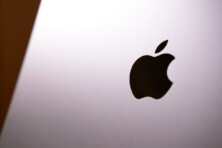 Andre Oentoro
Andre Oentoro
co-founder of Milkwhale
For centuries, our ancestors used the barter system to trade goods and services. As time went on, they discovered gold and used it as a payment medium. But, it was difficult to go around carrying tons of golds in the pocket.
Thus, banks were invented. Originally, a bank was a place where people could deposit their gold and received a banknote as a gold ownership proof. Eventually, this banknote would evolve into the money we use today.
However, the evolution of human transactions doesn’t stop there. In the last few years, the issue of a cashless society has been raised. Some people support it, and some others oppose it. So, what exactly is a cashless society? To understand it, let’s take a quick look at what cashless payment is all about.
What is the cashless payment?
In simple words, cashless payment is a payment that is done digitally. It means no cash is involved. You can use cards (credit, debit, etc.), digital wallets (Apple Pay, Android Pay, Google Wallet, etc.) and even your face (China has implemented facial recognition payment).
While a cashless society is a world where cash no longer exists. Every transaction is made using digital payment. While a cashless society surely brings a lot of benefits, it surely has its fair share of drawbacks as well. Here are some of the benefits and drawbacks of a cashless society:
Benefits
➕ Faster payment process
➕ Much shorter queue
➕ Lower crime rates
➕ Exchanging currency becomes much easier
➕ Better customer satisfaction
Drawbacks
➖ Difficult for the older generation to understand
➖ Many people still don’t have access to a bank account
➖ More likely to cause overspending
➖ Higher risk of data breaches
➖ Technology isn’t perfect
To understand better what cashless payment is, check out this well-crafted infographic about cashless payment by Milkwhale.
Andre Oentoro is one of the co-founders of Milkwhale, an internationally acknowledged infographic production agency. He helps businesses increase visibility on the internet with visual data and well-placed outreach campaigns.










